|
|
 |
 |
 |
 |
 |
|
Cuts & Profiles |
|
|
|
Bevel - A bevel is an angled cut across the edge of a board from face to face. Often simply referred to as a miter, it, like a miter, can be cut at any angle. It also is used in cutting wood trim to fit. It is often used to assemble small boxes and drawers to create a seamless look at the corners. A bevel also creates a chamfer when cut on the edge or end of a board. A handsaw with miter box, miter saw, and table saw with miter gauge can be used to cut a bevel.
|
|
|
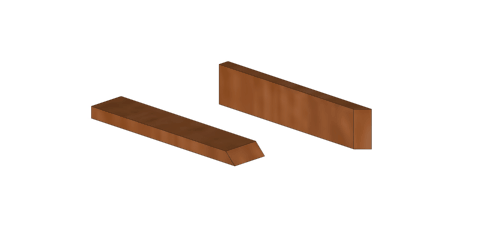 |
|
|
|
Chamfer - A chamfer is a bevel cut on the edge or end of a project part that leaves some of the edge or end intact. It is used, for example, to create a profile on the entire edge of a panel or drawer front, or along the length of furniture legs. Chamfers can be cut at various degrees using a table saw with the blade tilted, or with specialty chamfer bits in a router, but are commonly cut at 45-degrees.
|
|
|
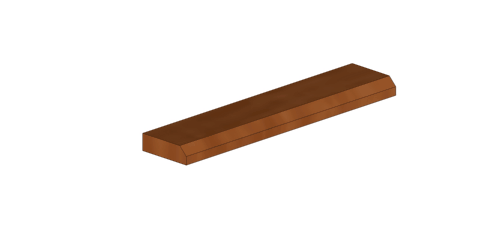 |
|
|
|
Crosscut - To cut a board against the grain and across its width to result in a shorter piece of wood. Crosscutting can be done using several tools, including a handsaw, circular saw, miter saw, table saw, and even a jig saw. Depending on the user's skill level, a handsaw most often will provide the least amount of accuracy in crosscutting.With power tools, care must be taken to carefully measure, mark and position a cutting guide in order to achieve an accurate cut.
|
|
|
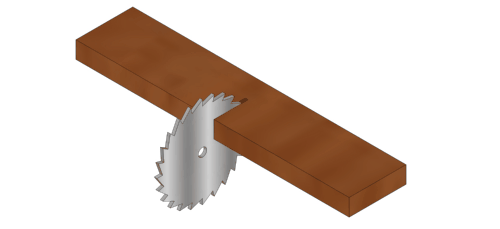 |
|
|
|
Dado - A dado is a channel cut across the width of a board in the same direction as a crosscut. It is often used as a means of attaching shelving in bookcases. Dadoes can be cut using a dado blade set designed for a table saw, or a router with a straightedge bit. There is some debate over which tool cuts the best dado, with the argument being that a router will cut the smoothest bottom for a dado, and a dado blade-cut dado requiring sanding or a chisel to finish off the cut.
|
|
|
 |
|
|
|
Groove - A groove is a channel cut along the length of a board in the same direction as a rip. Grooves are often cut in drawer sides to allow the drawer bottom to be placed in the drawer during assembly. Grooves also are cut into bookcase sides to allow for a back panel to be inserted. Like a dado, a groove can be created using a router with straightedge bit, or a table saw with a dado blade set.
|
|
|
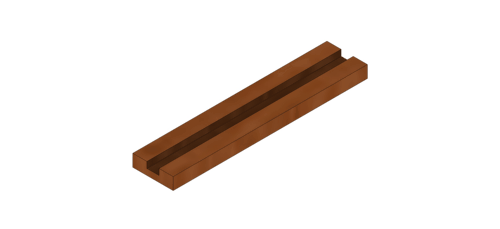 |
|
|
|
Kerf - This refers to the width of the cut taken out by a saw blade and the thickness of a saw blade. A common rule of thumb for the kerf of a combination blade (one designed to be used for both ripping and crosscutting) is 1/8-inch. It is important to account for this dimension when cutting multiple project parts from a single board. Eight cuts on a single board adds up to 1-inch, using the rule of thumb. Kerf bending is a technique that uses a series cuts made only partially through the thickness of a board that allows the board to become flexible. The technique is also used when applying drywall to curved areas.
|
|
|
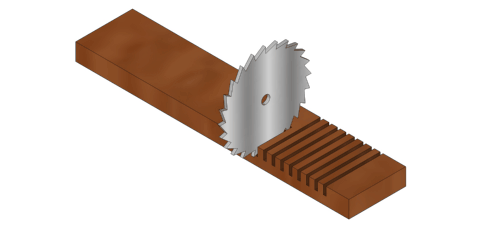 |
|
|
|
Miter - A miter is an angled cut across the face of a board from edge to edge. It can be cut at any angle, but generally refers to a 45-degree angle. Picture and mirror frames are obvious examples of miter joinery, along with wood trim. The most basic way to cut miters is to use a handsaw and miter box, but a much more efficient way is to use the aptly named miter saw, or a table saw with a miter gauge.
|
|
|
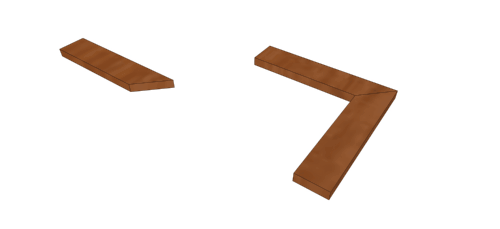 |
|
|
|
Rabbet - A rabbet is an open channel cut along the edge or across the end of a board. It can be used for joinery, such as creating a panel or joining parts at a 45-degree angle. It also can be used to created an offset lip, such as the inset area inside a picture frame where the class, picture, and backing are placed, and for attaching a back panel for a bookcase or dresser. It can be created using a router with a rabbeting bit, or a table saw with a dado blade set.
|
|
|
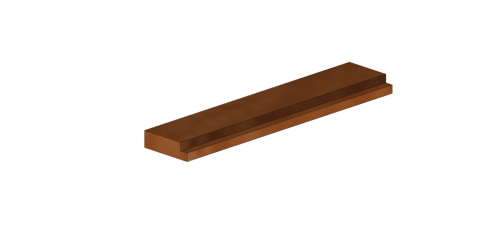 |
|
|
|
Rip - To cut a board with the grain and along its length to result in a narrower piece of wood. Ripping, as it is most often called, is most effectively done on a table saw where the greatest accurancy can be achieved. Boards also can be ripped using a circular saw and a straight edge guide clamped in place. Care must be taken with both tools through the use of outfeed tables, roller stands, or some other means to allow for the support of long boards.
|
|
|
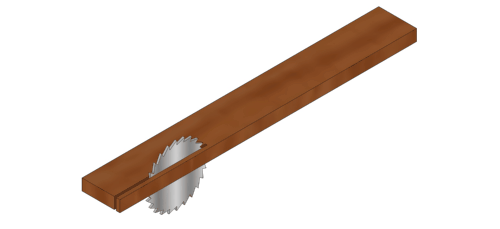 |
|
|
|
Roundover - The aptly named roundover is rounded profile cut along the top or bottom corner of an edge or end of a project part. They are commonly cut on table tops, bookcase frames, and table legs - anywhere that a softer look and feel is desired on a corner. Roundovers are especially good for children's furniture. Routers are best for creating uniform roundovers with specialty bits available in 1/8- or 1/4-inch radius increments. Roundovers also can be created using a power sanding, but will not be as clean a profile as will be created by a router.
|
|
|
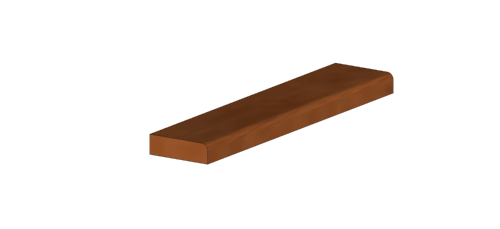 |
|
|
 |
 |
| (C) Chris Hill/Chief’s Shop 2009-2014 |
|
|
|
|